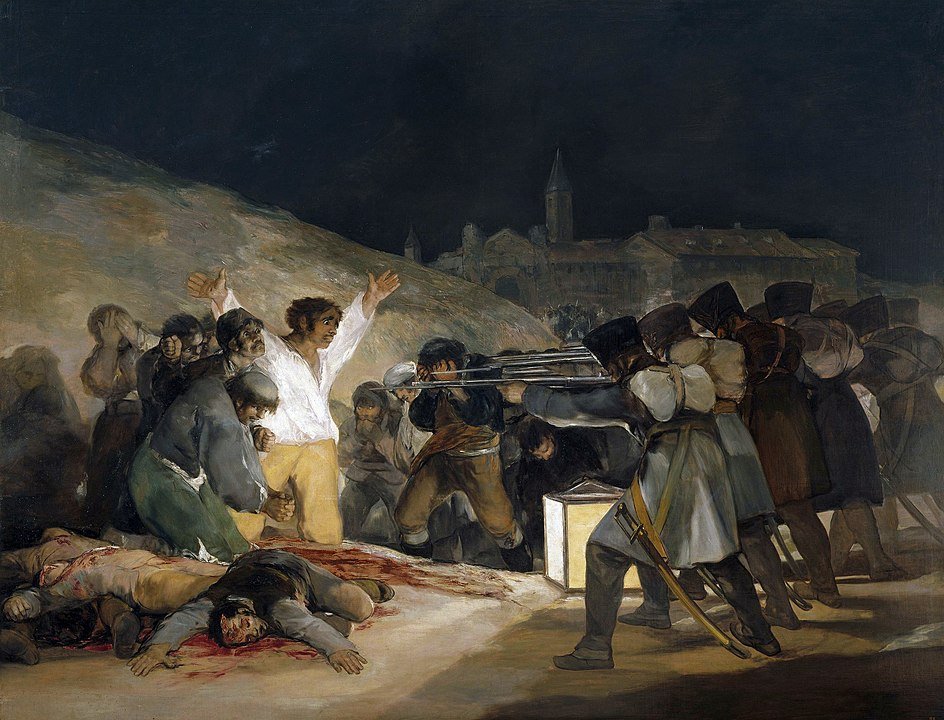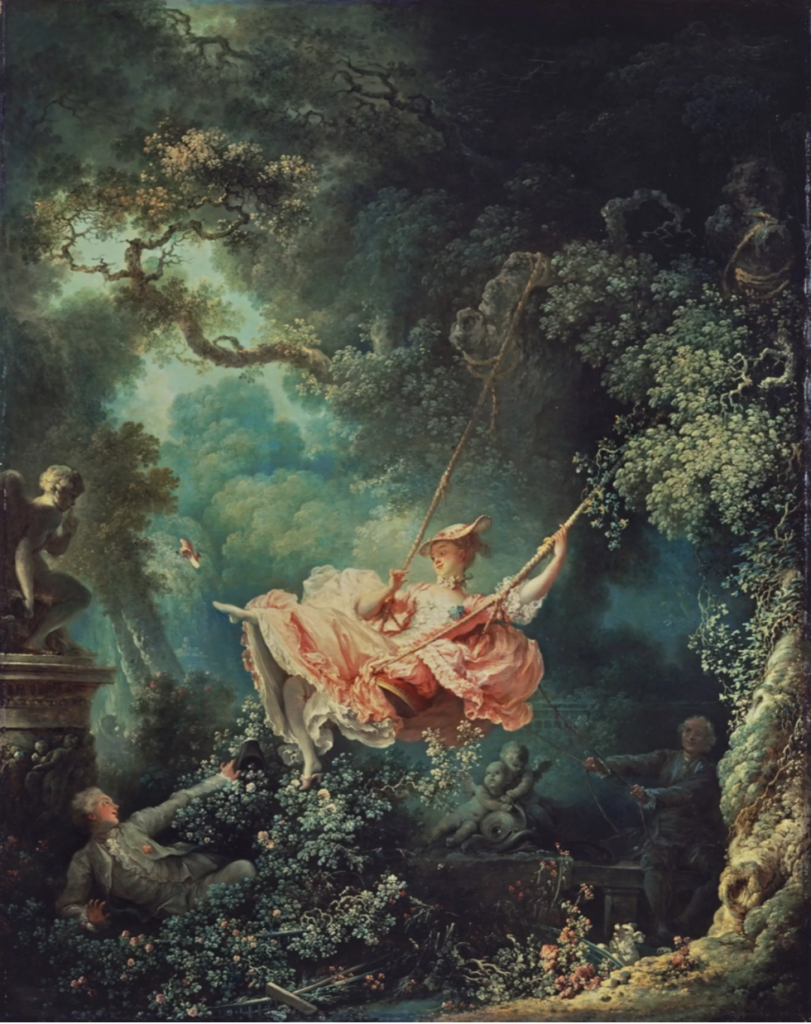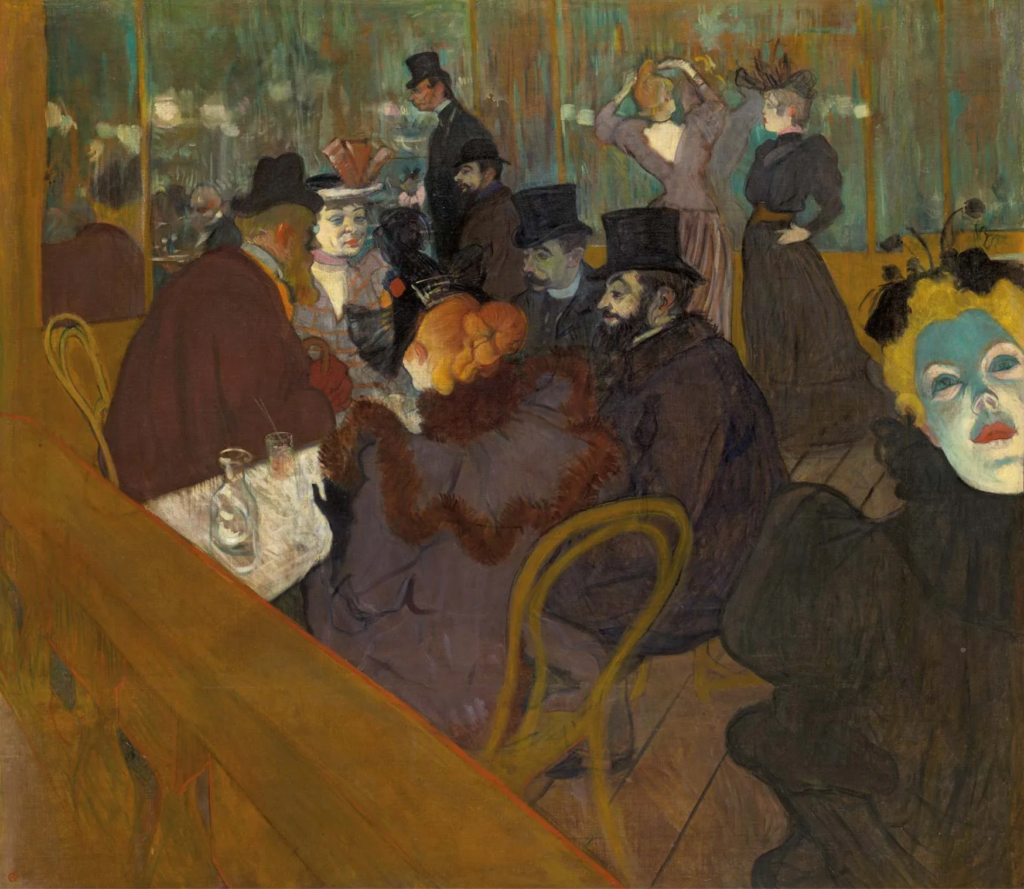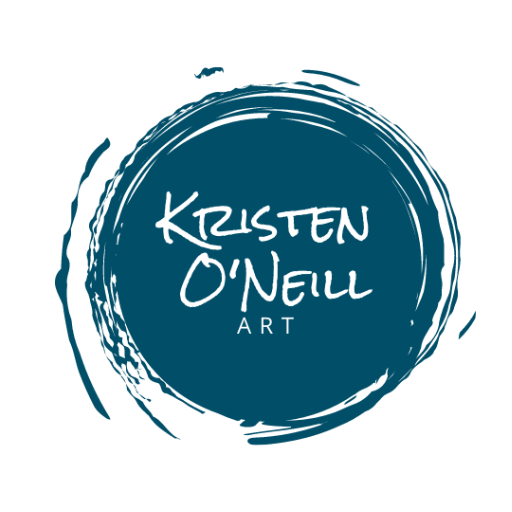As a painter, you want your artwork to be visually interesting and engaging to the viewer. One way to achieve this is by using the principle of emphasis. Emphasis is the act of making a specific element of your painting stand out and draw the viewer’s attention. By creating emphasis in your paintings, you can guide the viewer’s eye and create a visual hierarchy.
Here are some tips to help you create emphasis in your paintings. Not all of these tips can be used at the same time. Think about which one may help strengthen your painting, and concentrate on that.
What is the Focal Point?
Is there a focal point in your painting? Does it make sense to be the center of attention? For example, if you have a bright white object and the rest of the values are darker, our eyes will go there first. Is this what you want to have happen?

The Third of May, Francisco Goya, 1814. Oil on Canvas. 104.7 in x 135 in. Notice how the white shirt brings your attention immediately to figure in front of the soldiers.
Use Value to Create Emphasis
Value refers to the lightness or darkness of a color. By using value to create contrast, you can make one element of your painting stand out and draw the viewer’s attention. For example, you can make one area of your painting darker or lighter than the others to create emphasis.
Use Contrasting Colors
By using contrasting colors, you can make one element of your painting stand out and draw the viewer’s attention. For example, you can use a bright red color to draw attention to a specific area of your painting. Some colors draw our attention better than others. For example, a cool blue will recede, while a hot orange will pop forward. Violet is one of those awkward colors that seems cooler, but really still pops forward a bit. (It’s hard to keep purple in the background.)

The Swing, Jean-Honoré Fragonard, 1767, 32″ x 25″. The figure in pinks (red) is the complement of the background of greens and blues.
Play with Size and Scale
By making one element of your painting larger or smaller than the others, you can create emphasis and draw the viewer’s attention. Think of the scale of the flowers in a Georgia O’Keeffe painting.
Experiment with Texture
Textures can create a sense of depth and interest in your painting, and can also be used to create emphasis. By using a contrasting texture, you can make one element of your painting stand out and draw the viewer’s attention. For more on texture, see this lesson: Texture: Element of Art that Adds Depth & Dimension
Utilize the Rule of Thirds
The rule of thirds is a design principle that suggests dividing an image into nine equal parts and placing important elements along the lines or at the intersections. This can help to create a visually balanced and harmonious composition, while also allowing you to create emphasis on specific elements.
Place Elements in Unexpected Places
By placing elements in unexpected places, you can create emphasis and draw the viewer’s attention. This doesn’t have to be an in-your-face kinda of deal. Something small, once noticed, can help keep the viewer’s attention and change the narration.

At the Moulin-Rouge, Henri de Toulouse-Lautrec, 1892-95, oil on canvas, 48 in x 54 in. This painting at first brings your attention to the table with the figures around it. But, suddenly the face of a woman, oddly cropped, and quite turquoise, pops out at you from the right. Seeing this in person, I remember making a sound of surprise when that woman seemed to jump out at me.
Next time you look at art you can ask yourself these questions:
- Is there something that is emphasized?
- If so, how?
- Is there a focal point?
- Do I feel like I understand what the artist wanted me to focus on?

